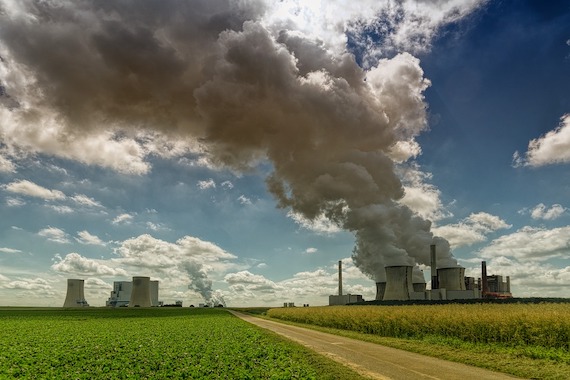Ann Arbor (Informed Comment) – Michael S. Regan, the administrator of the Environmental Protection Agency, announced on Thursday the most ambitious limits on how much carbon dioxide and other pollutants coal and gas-fired power plants can emit. The plants will have to cut their carbon dioxide emissions by 90% between 2035 and 2040.
The new rules are being released for public comment and once finally approved will go into effect in 2024. They will likely face a court challenge, but Regan says that this time the agency has gotten the regulation right in terms of existing law.
Regan is requiring fossil gas and coal plants to use carbon capture and storage techniques to reduce their output of greenhouse gases. This equipment is an extra expense, and that in itself could spell doom for any of these plants that are already having trouble competing in a market where wind and solar are typically competitive or cheaper. Wind nowadays is typically 4 cents per kilowatt hour and solar varies but on average is a little over 6 cents per kilowatt hour. Appalachian coal nowadays also comes in at about 6.2 cents per kilowatt hour. So coal can’t compete with either one, since wind and solar are going to pick up billions in government tax offsets and grants via the Inflation Reduction Act.
Not only are solar and wind plummeting in price over time, with constant technological innovation making them cheaper, but now fossil gas and coal will have the extra burden of the carbon emissions limit.
Although Regan assures us that carbon capture and storage exists and is economically feasible, fossil fuel industry leaders deny this. I think the latter know best. Nevertheless, the EPA has been found by the Supreme Court to have the authority to regulate air quality and emissions based on federal law. It just can’t tell the power plants how they should attain those limits.
If carbon capture and storage is vaporware that doesn’t even really exist or is too expensive, then fossil gas and coal plants will have to find some other way to cut their carbon dioxide emissions.

Via Pixabay
For fossil gas plants, that might be to burn more hydrogen with their gas, reducing their carbon footprint.
For coal plants, there isn’t really a good alternative except to reduce their hours of operation or to close down. Which is what we want, anyway.
These plants are already closing down at a fast clip, but not fast enough to stop them from wrecking the earth. Of all the electricity plants closing in 2023, 98% will be coal and fossil gas fired.
Just three years from now, in 2026, 50% of presently existing coal-fired plants are expected to close. Then another 40% will close by 2030. During the rest of this decade 80 gigawatts of coal power will be retired.

H/t Institute for Energy Economics
And all these projections were before today’s announcement.
Through 2042, the new standards would “avoid up to 617 million metric tons of total carbon dioxide (CO2).”
The new standards also regulate particulate matter, the tiny stuff that gets into your lungs and causes cancer. Only about half of lung cancer patients had smoked, and scientists for a long time were confused about how the other half fell ill. It is now clear that particular matter from burning fossil fuels is the culprit.
If these standards are implemented, by 2030 they would forestall:


 © 2025 All Rights Reserved
© 2025 All Rights Reserved